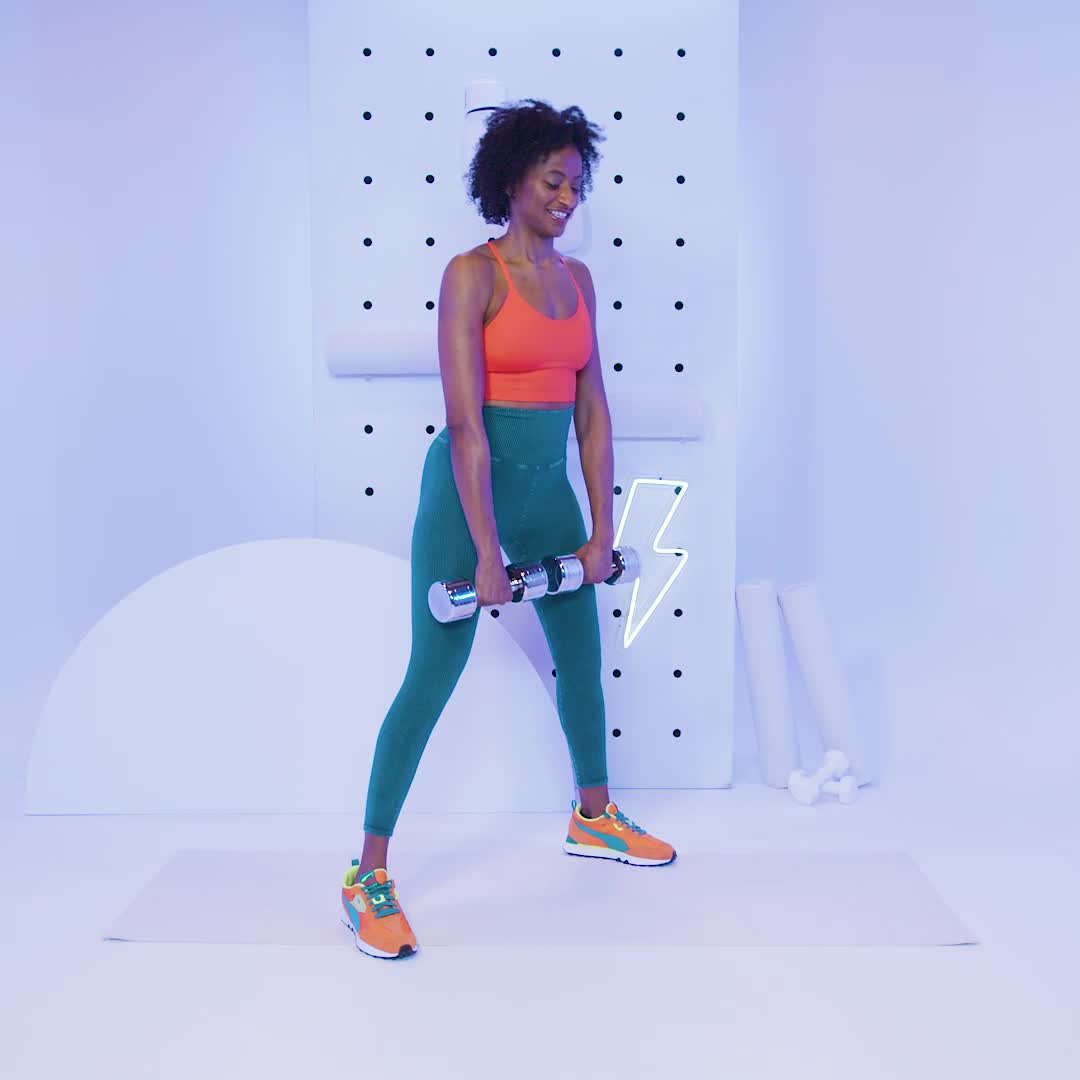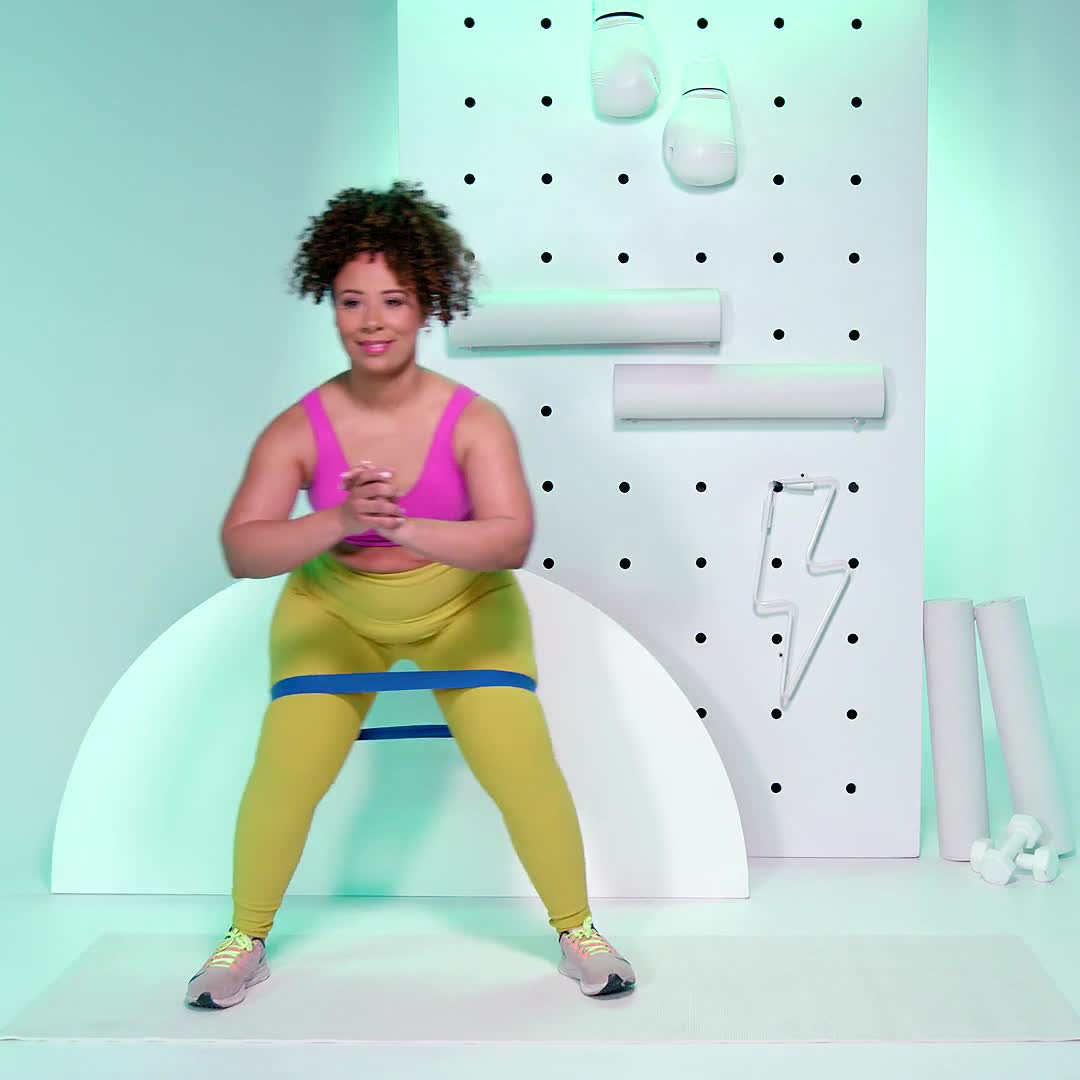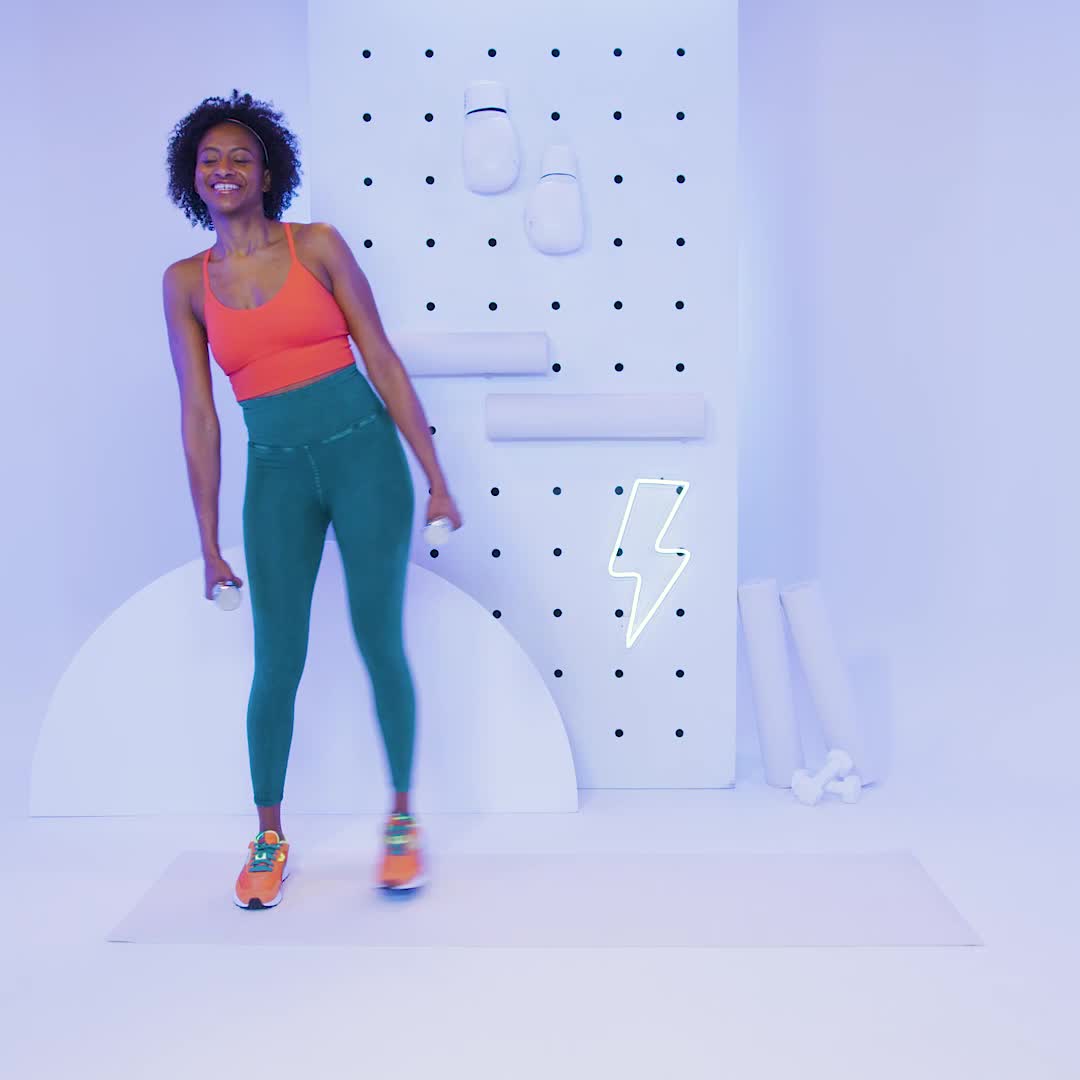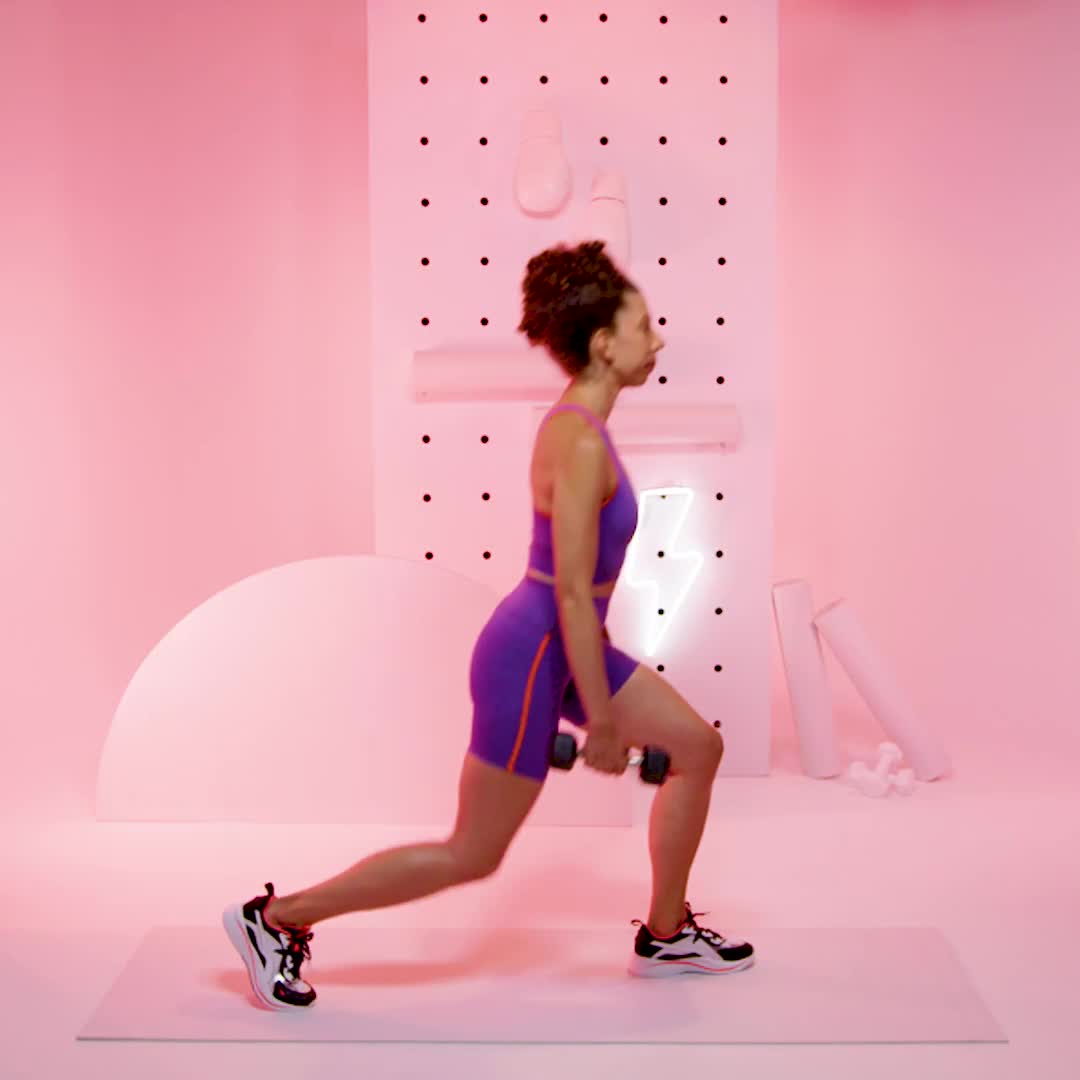If you’re looking to get stronger or just feel more confident in your body, a well-rounded leg day routine is a must. A solid leg day workout isn’t just about building muscle—it’s about working all the major lower body muscles so you can move better, feel stronger, and crush everyday tasks without getting hurt.
To keep it simple, think of your legs in two sections: the front (anterior chain) and the back (posterior chain). The front includes your quads, adductors (inner thighs), and tibialis anterior (muscle to the outside of the shin bone). The back covers your hamstrings, glutes, calves, abductors, and additional little muscles in and around the hip joint. Targeting both sections is key because it ensures balance—for example, strong quads without strong hamstrings, for example, can lead to muscle imbalances that affect your posture, stability, and even your risk of injury, says Kristina Earnest, CPT, a New York-based personal trainer. By working your legs evenly, you’ll build a stronger foundation for everything from walking to lifting weights.
Leg exercises benefit both your body’s form and function. “A strong lower body is essential to so many everyday functional movements,” says Earnest. “Your lower body strength simply allows you to live your life.” Think about it: Each time you climb stairs or squat to pick something up, you’re using strength and stabilization from your legs.
Plus, leg workouts naturally engage other muscles in the process. For example, consider a squat (one of the very best leg exercises out there). Not only does it fire up your glutes and quads, but it also recruits your core to balance and stabilize your body through the movement. “Training large or multiple muscle groups increases your heart rate,” Earnest says, which means you’re building strength and getting a cardio boost at the same time. “That is a bang for your metabolic buck.”
If you’re ready to build your strongest lower body yet, read on for a killer trainer-programmed leg day routine for your next lower-body workout. (Need a little extra motivation? Just look at Carrie Underwood’s incredible legs and her intense leg workouts to see what’s possible.)
Meet the experts: Kristina Earnest, CPT, is a personal trainer with over 10 years of experience leading a variety of fitness classes. Claudette Sariya, CPT, is a personal trainer and fitness educator based in New York City as well as a part of the Women’s Health/Men’s Health Strength in Diversity program’s class of 2023.
What counts as “leg day,” anyway?
“Leg day” is a dedicated workout sesh focused entirely on strengthening and conditioning the muscles in your lower body. By giving your legs their own day, you ensure you’re hitting key muscle groups with enough volume and intensity to build strength without draining energy for upper-body exercises, says Claudette Sariya, CPT, a personal trainer and fitness educator based in New York City.
It’s often part of a workout split, where different muscle groups or movement patterns are trained on specific days. For example, a split might include separate days for upper body (like chest and back), lower body (leg day), and cardio or core-focused workouts. This structure ensures that each muscle group gets enough attention and recovery time between sessions.
How often should you do leg day?
In most workout splits, one to two dedicated leg days per week is common, but it really all depends on your fitness level and goals. If you’re just starting out, Earnest and Sariya agree that one lower body-focused session per week is plenty—especially since you’ll likely be mixing some lower-body exercises into full-body workouts.
As you get stronger and want to build more muscle, aim for two leg days a week with at least 48 hours of rest in between. For advanced trainees, you can train your legs up to four times per week on non-consecutive days. “Leg days are so important for building strength, but overdoing it can leave you too tired to get results,” says Earnest. So, don’t skip those rest days—they’re just as essential as the workouts!
Building A Balanced Leg Day Routine
A good leg day hits all the major lower-body muscle groups, so you’re building balanced strength. To do that, mix in different types of moves from the following categories:
- Glute activation: These exercises (think glute bridges or hip thrusts) wake up your glute muscles so they properly engage during bigger moves like squats or deadlifts, which is key for improving posture and preventing lower-back strain as loads become heavier. (Check out our Glute Gains Challenge for more tips!)
- Squat: These exercises work your quads, glutes, and core (like goblet squats or sumo squats).
- Hinge: These target your hamstrings, glutes, and lower back (like Romanian deadlifts or single-leg deadlifts).
- Lunge: Lunge variations build stability and balance because they force your leg muscles and core to stabilize your body in uneven positions, depending on the lunge stance (take the reverse lunge or lateral lunge, for example).
- Calf work: Don’t forget your calves! Moves like calf raises help with ankle stability and overall strength.
- Explosive movement (optional): Add power and spice things up (try jump squats or broad jumps).
If you want to make things harder, add weights or try adjusting your reps, sets, and even rest times, says Earnest. The key is to challenge yourself, but always keep your form on point!
Pro tip: If your goal is building strength and power, do three to six reps and two to three sets. If your goal is building bigger muscles, aim for six to 12 reps and three to five sets. If your goal is muscular endurance and cardiovascular health, increase to 12 to 20 reps, with two to three sets.
Don’t forget to warm up and cool down, too—both are critical parts of a good leg day session. Warming up your lower body loosens the joints and increases blood flow to your muscles, which helps you perform better and prevents injury, says Sariya. (Check out this Women’s Health warm-up tutorial for ideas.) Afterward, cool down to gradually lower your heart rate and let your body recover. (Try this cooldown guide to finish strong.)
A Trainer’s Favorite Leg Day Workout For Any Level
Time: 30-40 minutes | Good for: legs | Equipment: looped resistance band, dumbbells
Instructions: Perform two to three sets of 10 to 12 reps of each move below, or 30 to 45 seconds if you’re going for time. Rest for 30 to 60 seconds between each set before continuing on to the next. Perform the exercises as a circuit, completing all moves before resting for one to two minutes, then repeating from the top for a total of two to three rounds, says Sariya. Choose a weight that feels challenging but allows you to maintain proper form for the entire set, aiming for the last two to three reps of each set to feel tough but doable.
Pro tip: To make this leg day workout more challenging for advanced exercises, add weights (like dumbbells or kettlebells), increase the number of sets, or opt for single-leg variations where possible (like the glute bridge!) for extra intensity.
1. Goblet Squat
How to:
- Stand with feet hip-width and hold a weight in front of chest with both hands, elbows pointing toward floor.
- Hinge hips back and bend knees to lower into a squat.
- Engage glutes to return to standing. That’s 1 rep.
Why it rocks: The goblet squat is a beginner-friendly way to add heavier weight to your squats and simultaneously activate your core by holding the weight close to your chest and keeping your torso upright. Holding one weight in this position makes it easier to avoid common issues like leaning forward or arching your lower back, which can happen more easily in a traditional squat where one weight is held above either shoulder.
2. Sumo Deadlift
How to:
- Holding two kettlebells or dumbbells, stand with feet slightly wider than hip-width, toes pointed out.
- Position weights in front of thighs, palms facing body.
- Keeping knees slightly bent, press hips back as you hinge at the waist and lower weights toward floor.
- Squeeze glutes to return to standing. That’s 1 rep.
Why it rocks: This deadlift variation really targets your glutes, hamstrings, and back.
3. Banded Lateral Walk
How to:
- Place a mini resistance band a few inches above ankles.
- Stand with feet hip-width, knees slightly bent.
- Maintaining a tight core, step left foot out to side, followed by right. That’s 1 rep.
Why it rocks: This move warms up your glutes and hits your often-overlooked glute medius muscles, which are located on the outer side of your hips. These muscles play a big role in stabilizing your pelvis and supporting side-to-side movements.
4. Lateral Lunge With Balance
How to:
- Stand with feet hip-width, holding dumbbells at sides.
- Take a big step to the left, then push hips back, bending left knee and lowering until left knee is bent to 90 degrees.
- Reverse the motion to push back to an upright position balancing on right leg, with left leg lifted. That’s 1 rep. Complete all reps, then switch sides and repeat.
Why it rocks: Most workouts focus on forward-and-backward movements, but lateral (side-to-side) movements are important for well-rounded fitness.
5. Calf Raise
How to:
- Stand with feet slightly wider than hip-width. (Optional: Hold a pair of dumbbells.)
- Keeping the rest of body still and engaged, lift up onto the tips of toes. (Option: Hold for up to 30 seconds.)
- Lower heels back to the ground with control. That’s 1 rep.
Why it rocks: This move isolates your calves, no machines or heavy weight necessary.
6. Reverse Lunge
How to:
- Stand with feet hip-width, and hold one dumbbell in each hand at sides.
- Step back with right leg and bend both knees as you lower until knees are both bent at 90-degree angles.
- Push through left foot to stand.
- Step back with left leg and bend both knees as you lower until knees are both bent at 90-degree angles.
- Push through right foot to stand. That’s 1 rep.
- Continue alternating legs.
Why it rocks: This staple unilateral exercise works your quads, hamstrings, and glutes.
7. Glute Bridge
How to:
- Wrap a resistance band around mid-thighs or rest a dumbbell on your pelvis and lie face-up with knees bent, feet planted on the floor about 12 to 16 inches from butt.
- Engage core, then drive through heels and squeeze glutes to raise hips toward the ceiling while pushing upper back into the ground.
- Pause at the top of this position and slightly press knees apart.
- Lower down one vertebrae at a time to return to start, tapping hips to ground before repeating the movement. That’s 1 rep.
Why it rocks: Added resistance from the mini band helps you up your focus and burn on your glutes.











